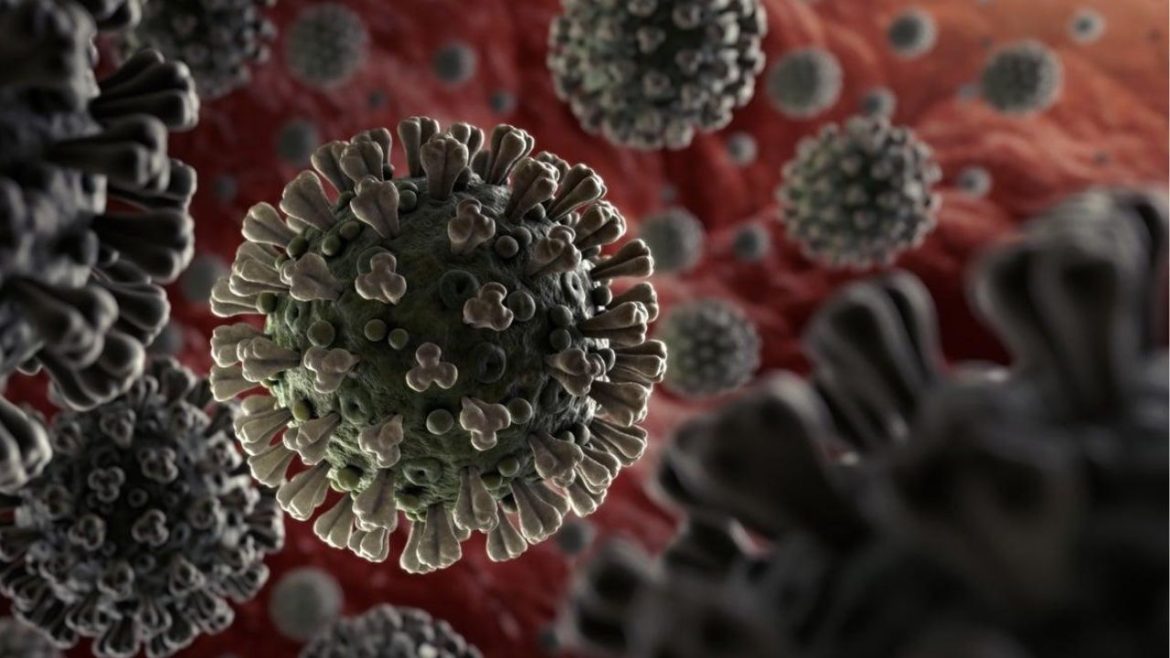Worldcoronaviras (WCV) is a virus that causes severe respiratory disease, including pneumonia and bronchitis. It also triggers chronic hepatitis infections and neurological disorders, such as meningitis.
There are more than 100 known worldcoronavirases, which are classified into five families. These include the SARS-CoV family (severe acute respiratory syndrome coronavirus), MERS-CoV family (mortality from ESCovirus infection), Hendra virus family, Rous sarcoma virus family and Flavivirus genus, which includes Dengue fever virus and West Nile virus.
Symptoms
Worldcoronaviras is a type of respiratory infection caused by a virus that spreads easily. People can become infected by breathing in droplets of the virus or by touching things that have been touched by an infected person.
Symptoms of the infection can range from mild to severe and may include fever, cough, trouble breathing, muscle aches and headaches. It can also cause gastrointestinal problems like nausea, vomiting and diarrhea.
The symptoms of the infection usually begin within two days after an individual has been exposed to the virus. Depending on the severity of the infection, some patients may develop pneumonia or other serious complications.
In rare cases, the infection can be fatal. It can also cause congenital disabilities if it is contracted by pregnant women or their developing babies.
Because worldcoronaviras is so easily spread, it can affect travel and tourism industries worldwide. The disease can cause flight cancellations and reduced visitation rates, which could affect airlines and businesses that depend on tourists.
Worldcoronaviras has been associated with a condition called multisystem inflammatory syndrome in children (MIS-C). This syndrome is an illness that causes parts of the body to become inflamed, including the heart, lungs, kidneys and brain.
It can also trigger chronic hepatitis infections and neurological disorders such as meningitis.
The best way to prevent the spread of coronaviruses is to practice good hygiene habits, such as frequent handwashing and physical distancing. Wearing a mask or face covering when in public settings is also recommended, as it helps reduce the possibility of spreading viruses from your hands to your mouth and nose.
Origins
Worldcoronaviras are an especially dangerous group of viruses that cause severe respiratory illness in both humans and animals. They are also known as WCVs and they have caused many deaths around the globe.
These viruses are extremely infectious and spread quickly, which can lead to a rapid pandemic. The disease can be passed from person to person through contact with respiratory emissions, such as spit or bodily fluids, and through surfaces tainted with the virus, such as door handles and entryway handles.
In addition to causing severe infections, WCVs can also contaminate water supplies and ecosystems with high infectious particles that can cause serious damage. These diseases are a growing concern, and scientists need to better understand their origins to prevent future pandemics.
The origins of this virus are still unknown, but many experts believe it originated in bats or pangolins. This new strain of coronavirus was first identified in Wuhan, China, in December 2019 and has spread globally.
Some experts believe that the virus may have escaped from a laboratory in China where it was being studied, and then spread to Wuhan’s wet market. Chinese officials have disputed this theory, however. They point to the fact that a major research center in the city, the Wuhan Institute of Virology (WIV), is a 40-minute drive from the wet market.
According to a recent article in the Washington Post, however, French researchers have uncovered evidence that suggests that COVID-19 might have entered China from a laboratory. These researchers analyzed genetic sequences that were posted in GISAID, the world’s largest public virus database.
The scientists analyzed these data and they found that the sequences are very similar to those of other coronaviruses that have come from animals. They said that these genetic sequences are very similar to the coronavirus that caused SARS, which was a highly contagious strain of coronavirus. They argued that this data could be a key factor in the origins of this new strain of coronavirus.
Transmission
Coronaviruses are a group of viruses that can cause illness in both animals and humans. Examples include the severe acute respiratory syndrome (SARS) virus, which spread rapidly in 2002-2003 and became a global pandemic.
The new coronavirus, called COVID-19, caused an outbreak in China in December 2019. It has now spread to more than 185 countries and regions worldwide. The World Health Organization declared it a global pandemic in March 2020.
It has spread easily through person-to-person contact, such as sharing a sneeze or cough with someone else. Droplets that contain the virus can also land on nearby surfaces or objects, and can be picked up by other people who touch these items.
Infection can lead to a severe disease, such as pneumonia. These symptoms can last 2-14 days, and are often fatal in some cases.
Researchers in Australia are working to determine how to best prevent the disease. Their models predict that social distancing, such as closing businesses or restricting gatherings, may help. They also recommend a range of measures for quarantining contacts and isolating infected individuals.
Public health officials are also investigating if the new coronavirus can be transmitted from pets to humans. They say the chances of that happening are low, but it’s possible.
The first human case of COVID-19 was reported in Wuhan, in Hubei province, China, in early December. Since then, it’s spread to 181 countries and regions. It’s now the world’s most widespread viral outbreak. Scientists don’t know exactly how the new coronavirus got into the world, but they suspect it originated in bats or pangolins. They think the virus jumped from these animals to people in a place like a seafood market or an animal lab.
Treatment
Coronaviruses are a family of viruses that infect animals and humans. They cause infections that range from the common cold to more severe respiratory illnesses. Several of these infections have caused epidemics that have led to thousands of deaths worldwide.
Viruses are very contagious and can be spread from person to person in airborne droplets. These droplets are released when an infected person coughs, sneezes or talks, or when someone touches them with their hands.
If you’re infected with COVID-19, it’s important to get medical care right away. Symptoms can develop quickly and affect people of all ages. They can include fever, breathing difficulties, and achy muscles.
Treatment options can vary depending on the patient’s age, underlying health conditions and how bad their symptoms are. For example, older adults or those with a high risk for comorbidities (conditions that make it harder to recover) may need more intensive treatment.
Some people will also require long-term medications to treat serious symptoms like breathing problems, a low heart rate and muscle pain. The costs of these medications can be high, and they’re not covered by most insurance companies.
One possible treatment is a drug called ensovibep, which is designed to attack the spike protein that allows the coronavirus to enter cells. Using a special protein, the drug can grab onto a part of the spike protein on the surface of the virus and prevent it from entering healthy cells.
The drug is currently being tested in Phase 2 trials on hospitalized patients and those who have recently been diagnosed with the disease. It’s being developed by Molecular Partners, a Swiss drug company. It could save millions of dollars in health care costs and help people recover faster.
Prevention
The world has been grappling with the outbreak of worldcoronaviras since it was first identified in Wuhan, China in December 2019. The virus has spread rapidly across the globe and is affecting millions of people. This has caused significant social and economic disruption.
As a result, it is important to take the right measures to prevent the disease from spreading. These include practicing good hygiene and avoiding close contact with people who are sick.
In addition, it is important to report any symptoms to the healthcare provider. This can help them diagnose the infection and treat it correctly.
It is also important to take steps to avoid coming into contact with people who have been infected, especially if they are coughing or sneezing. The most common way for a person to get infected is by breathing in respiratory droplets from an infected person.
Another important prevention strategy is to stay away from hospitals and medical clinics, unless you have an emergency. This will help you to avoid getting infected with the coronavirus.
The most important way to prevent worldcoronaviras is to practice good hygiene. This includes washing your hands frequently with soap and water, using hand sanitizer, and avoiding contact with people who are infected.
You can also wear a mask when you are in public, especially when there is a large crowd. This can help to protect you from the virus and other illnesses.
While the worldcoronaviras pandemic has affected many countries, it has also had a different impact on each one. Some countries have been able to limit the spread of the virus and prevent the death of people. Others have been more severely impacted by the outbreak and are still struggling to recover from it. The social and economic impact of the pandemic continues to reverberate throughout the world, making it clear that we must continue to strengthen our public health systems in order to ensure we are prepared for future emergencies.

